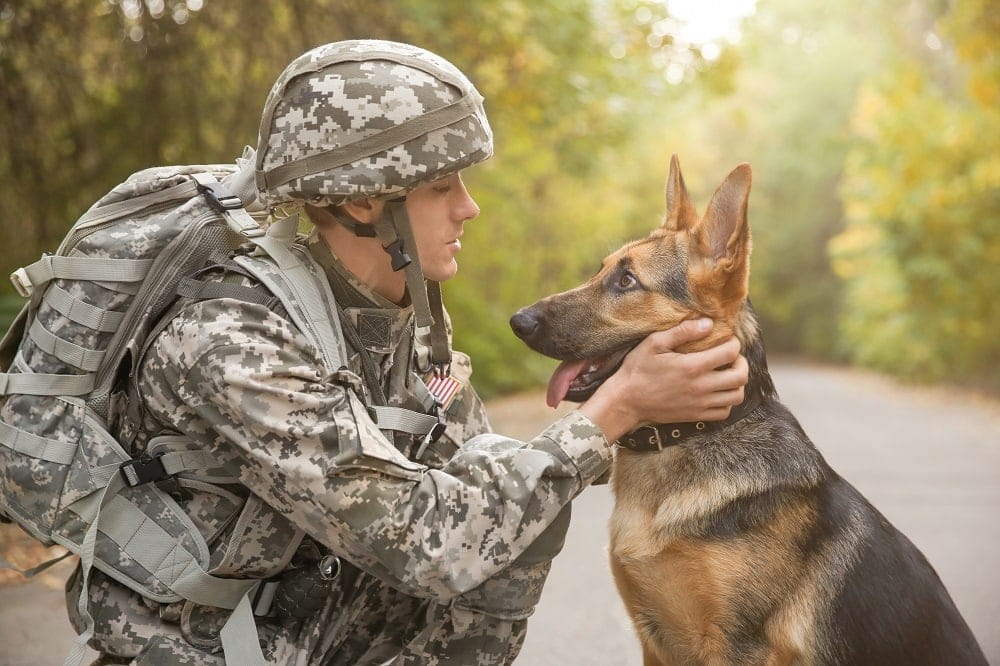It’s a very exciting time when your dog is pregnant and you’re expecting puppies. In most cases, things will go smoothly and you’ll end up with several new puppies in just a few months’ time. Occasionally, things don’t go as planned though, and complications arise in your dog’s pregnancy.
To ensure you have the information you need to accurately gauge your dog’s pregnancy, we’ve put together the following information about the most common abnormalities of dog pregnancy. Keep an eye out for these signs, but hopefully, you’ll never see them and your dog’s pregnancy will go by without a hitch!
During and Before Whelping
Not every complication with pregnancy happens while your dog is still pregnant. Many won’t become an issue until after your dog has finished whelping. However, the abnormalities we’re about to discuss happen during pregnancy and birth.

Dystocia
What Is it?
Dystocia is essentially a catchall term for difficult births. As such, several different things can cause dystocia. This is the main and most common abnormality that affects pregnancy and birth in dogs.
Causes
- Breed: Certain breeds are genetically predisposed to dystocia. Brachycephalic breeds are at higher risk than almost any other breed.
- Puppy Size: If a puppy is overly large it can result in dystocia during birth. Oversized puppies may not fit inside the birth canal. This is most often a problem with litters that consist of a single large puppy.
- Puppy Position: Most of the time, puppies are born head or feet first. On occasion, a puppy will get turned sideways in the birth canal or come out bottom first. When this happens, the puppy often gets stuck, resulting in complications.
- Developmental Defects: Certain developmental defects can lead to puppies’ body parts becoming enlarged. This can lead to difficulties fitting in the birth canal.
- In Utero Deaths: When puppies die in utero, their bodies can contort into unnatural positions, which can affect contractions and sometimes cause the puppy to get stuck.
- Pelvic Canal: Even if the puppies are of normal size, if the mother’s pelvic canal is too small, it could lead to difficulties with delivering puppies. This is particularly the case with breeds that have large heads.
When to Call the Vet
- Your dog’s vaginal discharge is bloody or smells foul.
- There is green thick discharge and no puppies are delivered.
- The pregnant mother is lethargic.
- The mother can’t stop vomiting.
- Stage one of labor begins when your dog’s temperature drops and generally lasts 6-12 hours. Call the vet if 24 hours pass after your dog’s temperature drops.
- Regular contractions persist for more than 20 minutes without any pups arriving.
- The time between births exceeds two hours.
- The mother is pregnant for more than 63 days without going into labor.
- A puppy or a fluid sac is present in the birth canal but not being delivered because it’s stuck.
Treatment
After you determine there’s a problem and you contact your vet, your vet will first need to perform a physical examination. This will allow your vet to determine whether or not the pups can move through the birth canal. The examination might consist of a vaginal exam, X-rays, and more. Once your vet diagnoses the issue, treatment can begin.
- Medication (oxytocin)
- Calcium injections
- Intravenous fluids
- Manual manipulation
- Cesarean section
False Pregnancy
Aside from dystocia, the other most common abnormality that occurs before whelping is false pregnancy. This is a rather common occurrence that usually happens around the end of the heat cycle. The dog will gain weight, their mammary glands might swell, and they could even start producing milk. Behavioral changes may accompany these physical changes as well. You might even witness your dog nesting or see a drop in appetite.
False pregnancies aren’t usually treated because they tend to fix themselves within a week or two. If there is excessive milk production, your vet will prescribe medication to stop this.
After Whelping
When it comes to abnormalities that occur before and during whelping, most of them are classified as dystocia. But there are several abnormalities that only present themselves after the whelping is complete and all the puppies have been delivered, including the following:

Mastitis
Mastitis is a condition that’s more common in cattle, though you will see it in dogs with some regularity. This is an inflammation and infection of the mammary glands that occurs only in nursing females. This includes both bacterial and fungal infections, though bacterial infections are most common.
You can help prevent the possibility of mastitis by keeping your dog’s whelping box clean and dry, along with any spaces dedicated to raising the puppies. Keep checking your dog’s teats and mammary glands, and make sure there are no signs of redness, swelling, pain, or change in milk color or consistency.
Metritis
Metritis is when the lining of the uterus becomes inflamed because of a bacterial infection shortly after giving birth or experiencing an abortion or miscarriage. If left untreated, metritis can cause sterility and even septic shock, resulting in a lethal condition. Some signs of metritis include a swollen, soft abdomen, dehydration, dark red gums, fever, and bloody or foul-smelling discharge from the vulva.
Dogs with metritis might also neglect their puppies or experience reduced milk production or depression. Curing this condition requires hospitalization for fluid therapy and possibly even for shock.
Eclampsia
Eclampsia is when a nursing dog’s blood calcium levels drop drastically, creating a life-threatening condition. It’s most common to see eclampsia in the mother when puppies are between one and four weeks of age. It can be caused by increased consumption of calcium during pregnancy or lactation. Alternatively, it might be from a dietary deficiency during pregnancy or a hormonal problem associated with the parathyroid gland.
Signs of eclampsia include restlessness, panting, stiff movement, muscle spasms, and convulsing. In rare cases, affected dogs might become aggressive, disoriented, or unsettled, or may be pacing, panting, whining, or experiencing a high fever.
Hemorrhage
Sometimes, hemorrhages occur during whelping. If you see significant blood flow following whelping, it could be a serious emergency and you should contact the vet right away if this does not stop within a few minutes. Other signs of hemorrhage include collapse, pallor, hemorrhagic thick vaginal discharge, sometimes with blood clots, weakness, and shock. If excessive, this can be life-threatening.
Subinvolution of Placental Sites
Subinvolution of placental sites or SIPS is when the placental sites fail to heal properly. This causes several weeks of bloody uterine discharge and is most common in dogs under three years old that are whelping their first litter.
- You may want to read this next: How to Help a Dog in Labor: 4 Important Things to Know!
Conclusion
While most canine pregnancies go off without any complications, there’s always a possibility of something going wrong. Knowing the signs of abnormalities ahead of time can allow you to spot an issue when it first starts, which might give you a better chance of resolving the underlying problem without major health effects for the mother or puppies.
Hopefully, your dog will never experience any of these complications, but if they do, at least you’re prepared to spot the first signs and take action. Always consult with your vet if you have any queries or doubts about your dog’s health and make sure you don’t miss any of their regular vet checks during the pregnancy, prior to whelping, and afterward as well.
Featured image credit: Gladskikh Tatiana, Shutterstock














